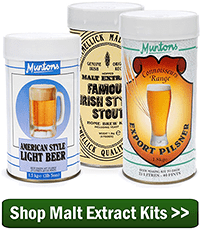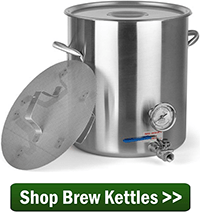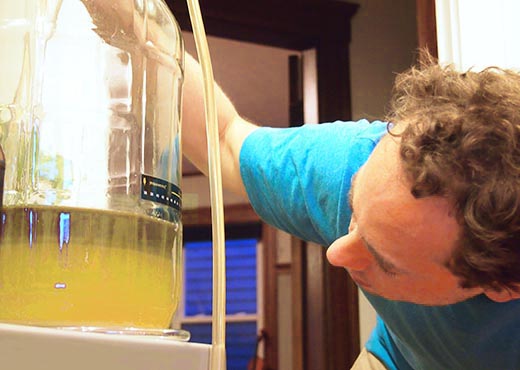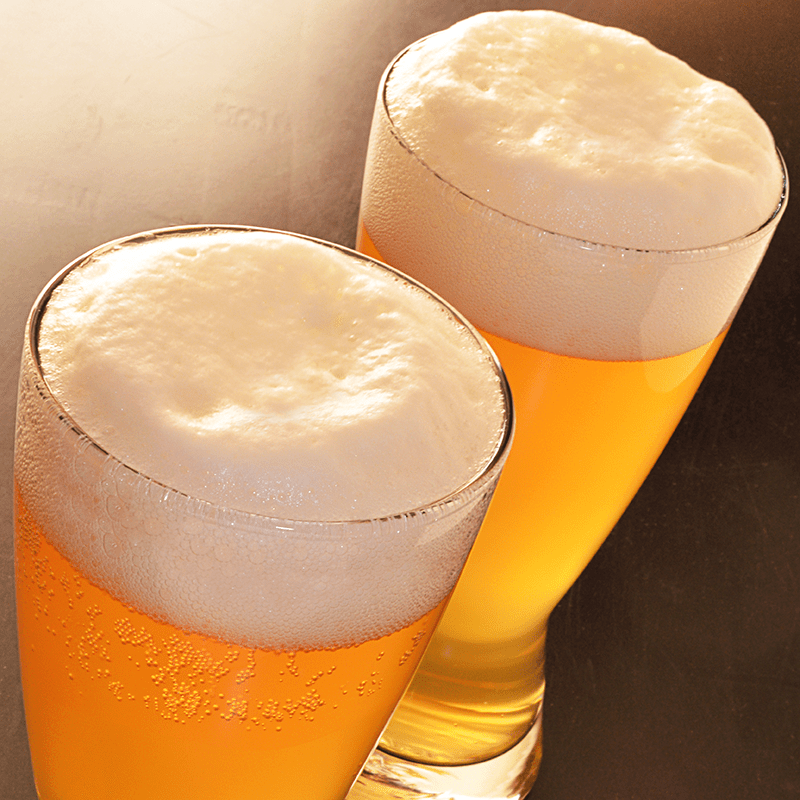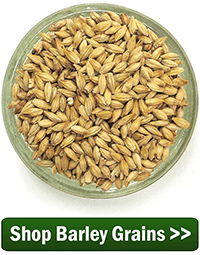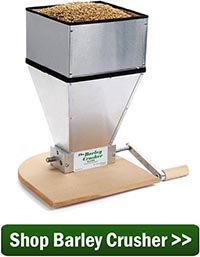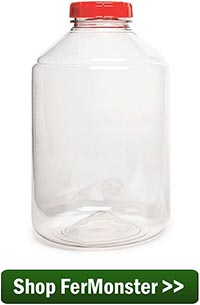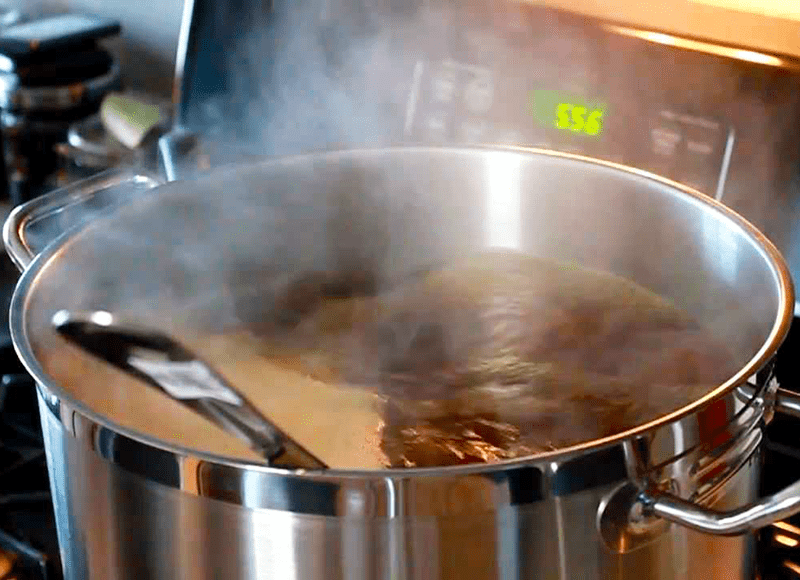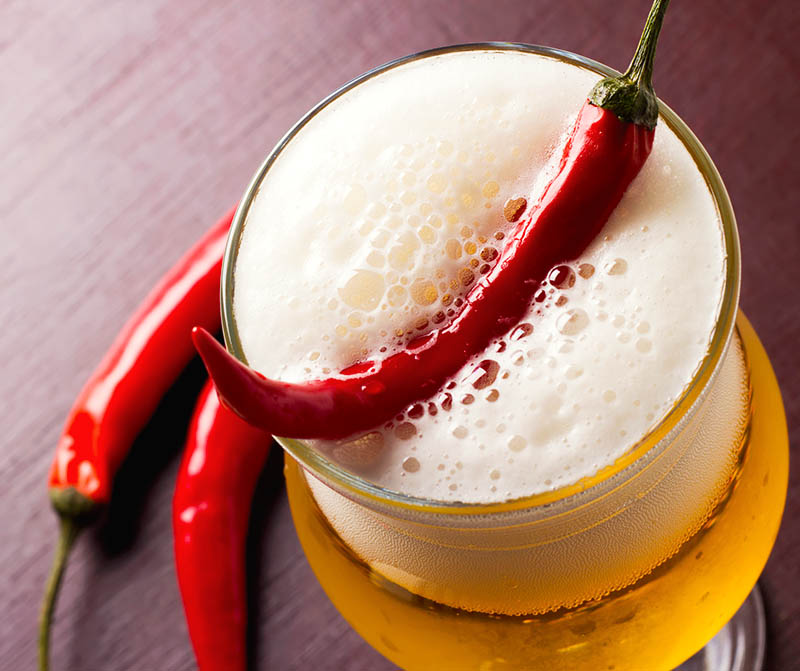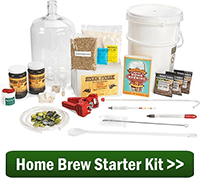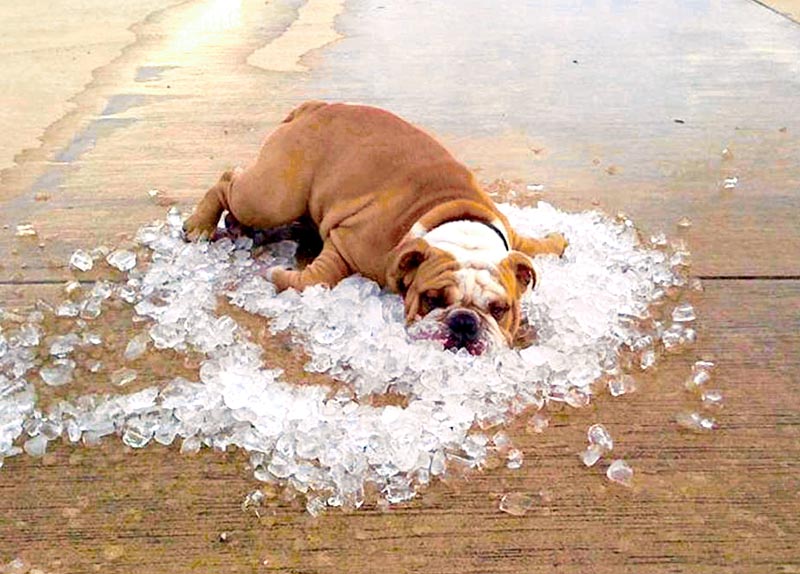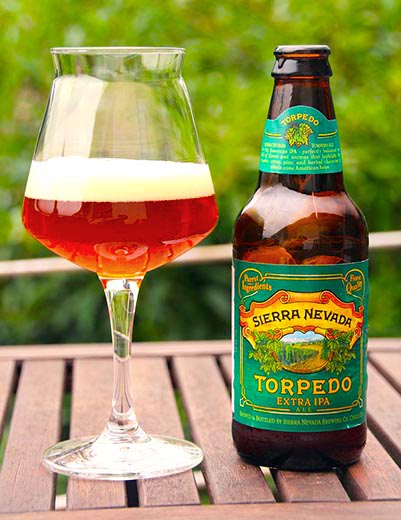 If you’re a fan of Indian Pale Ales, you’ve probably had Torpedo Extra IPA from Sierra Nevada. At 7.2% ABV and 65 IBUs, it’s a fairly aggressive IPA that showcases American ingredients.
If you’re a fan of Indian Pale Ales, you’ve probably had Torpedo Extra IPA from Sierra Nevada. At 7.2% ABV and 65 IBUs, it’s a fairly aggressive IPA that showcases American ingredients.
When searching for a Torpedo Extra IPA clone recipe, I stumbled upon this thread on HomeBrewTalk.com. The original poster contacted Sierra Nevada and got some details on the beer recipe. (If there’s ever a beer you’d like to clone, many commercial brewers are willing to help you out!)
Grain Bill
The grain bill is straightforward with about 90% American two-row malt as the base. Caramel 60L malt provides some malty sweetness to support the hops and some color. A small amount of Carapils malt will contribute some body. The grains should be mashed around 155-156˚F, which will help make for a full-bodied brew. Err on the lower side for good fermentability.
Hopping
Sierra Nevada’s Torpedo features three types of American hops: Magnum, Citra, and Crystal. Magnum provides most of the bitterness, while Citra and Crystal join in for flavor and aroma additions.
The key to producing a Torpedo Extra IPA clone recipe is the dry hops. Torpedo is named for a dry-hopping technique developed by Sierra Nevada in which beer is circulated through a “Hop Torpedo,” sometimes called a hopback or Randall. There are many ways to build your own hop torpedo, but for best results you should have a pump to force the beer through the torpedo. If you want to forgo the hop torpedo, traditional dry hopping procedures will work fine.
Yeast
As for yeast, a standard American ale yeast will do the trick. In fact, Wyeast 1056 and Safale US-05 are often referred to as the “Chico” strain. They’re reportedly the same yeast used by Sierra Nevada in their American ales. If using liquid yeast, I recommend preparing a two-liter yeast starter from two packets of yeast to have enough yeast cells to do the job.
Ready to give it a try? Here’s an all-grain recipe, with an extract option below! Good luck!
Torpedo Extra IPA Clone Recipe (All-Grain)
(5.5-gallon batch)
**recipe assumes a mash efficiency of ~70%
Specs
OG: 1.073
FG: 1.018
ABV: 7.2%
IBUs: 65
SRM: 10
Ingredients
14 lbs. American two-row malt
1 lb. Caramel 60L malt
.5 lb. Carapils malt
.75 oz. Magnum hops at :75 (11 AAUs)
.5 oz. Magnum hops at :30 (7.3 AAUs)
.5 oz. Magnum hops at :5 (7.3 AAUs)
1 oz. Crystal hops at :5 (4.3 AAUs)
.5 oz. Crystal hops dry hopped for 7-10 days
.25 oz. Citra hops dry hopped for 7-10 days
.25 oz. Magnum hops dry hopped for 7-10 days
2 packets Wyeast 1056: American Ale Yeast or 1 packet Safale US-05
Directions: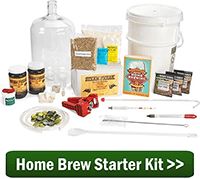
Mash the crushed grains in about five gallons of clean water at 156˚F for 60 minutes. Sparge to collect 7.5 gallons of wort. Boil for 90 minutes, adding hops according to schedule above. Whirlpool, chill wort, and transfer to a clean, sanitized fermenter. Pitch yeast at 70˚F or below. Ferment at 65-70˚F. Add dry hops to the secondary fermenter and allow to sit for 7-10 days. Bottle or keg for ~2.3 vols CO2.
Extract Option: Replace the 14 lbs. of two-row malt with 8.4 lbs. light DME. Steep the specialty grains for 30 minutes in clean water at 156˚F. Add half the DME and enough water to make a three-gallon boil. Proceed with the recipe above, adding enough clean, chlorine-free water to the fermenter to make five gallons.
Do you have a Torpedo Extra IPA clone recipe you’d like to share? We’d love to see it. Just post it in the comments below.
—–
David Ackley is a beer writer, brewer, and self-described “craft beer crusader.” He holds a General Certificate in Brewing from the Institute of Brewing and Distilling and is founder and editor of the Local Beer Blog.




 Goblet – Ideal for Belgian ales and Berliner weiss, the goblet features a wide mouth for easy access to the beer’s complex flavors and a structure that supports head retention.
Goblet – Ideal for Belgian ales and Berliner weiss, the goblet features a wide mouth for easy access to the beer’s complex flavors and a structure that supports head retention. Flute – A flute is a narrow beer glass that tapers towards the bottom. The shape gives the viewer a good look at carbonation and helps release the pleasing aromas of gueze, lambic, swarzbier, and
Flute – A flute is a narrow beer glass that tapers towards the bottom. The shape gives the viewer a good look at carbonation and helps release the pleasing aromas of gueze, lambic, swarzbier, and  Pilsner – The pilsner glass is similar to the flute, but it has a wider mouth. The change in shape showcases color, supports head, and encourages aromatics of – not surprisingly – pilsners, but also blonde ales, bocks, and witbier.
Pilsner – The pilsner glass is similar to the flute, but it has a wider mouth. The change in shape showcases color, supports head, and encourages aromatics of – not surprisingly – pilsners, but also blonde ales, bocks, and witbier. Pint Glass – Of all the beer glass types, this is the all-around go-to glass. It is versatile as it is common and is ideal for many of your favorite beers, including amber ale, altbier, English bitter, brown ale, IPA, porter, and
Pint Glass – Of all the beer glass types, this is the all-around go-to glass. It is versatile as it is common and is ideal for many of your favorite beers, including amber ale, altbier, English bitter, brown ale, IPA, porter, and  Snifter – The snifter, just like what you would use for brandy or cognac, is a smaller version of a goblet with a lip that turns inward, capturing desirable aromatics. Snifters are smaller than most other glasses, making them a good fit when drinking higher gravity beers. Use a snifter when enjoying barley wine, Belgian dark strong ale,
Snifter – The snifter, just like what you would use for brandy or cognac, is a smaller version of a goblet with a lip that turns inward, capturing desirable aromatics. Snifters are smaller than most other glasses, making them a good fit when drinking higher gravity beers. Use a snifter when enjoying barley wine, Belgian dark strong ale,  Stange – A stange is a relatively narrow beer glass type with no taper. It concentrates aromas into a narrow channel and gives the drinker a good look at the beer. Stange glasses are appropriate for a number of styles, including altbier, bock, gose, lambic, and rye beer.
Stange – A stange is a relatively narrow beer glass type with no taper. It concentrates aromas into a narrow channel and gives the drinker a good look at the beer. Stange glasses are appropriate for a number of styles, including altbier, bock, gose, lambic, and rye beer. Stein – In German, “stein” means stone. For years prior to the widespread use of glass, these large mugs were made of stone. Go to Germany today and ask for a “Mass stein” – they’ll give you a full liter of suds. Steins work great for Oktoberfestbier.
Stein – In German, “stein” means stone. For years prior to the widespread use of glass, these large mugs were made of stone. Go to Germany today and ask for a “Mass stein” – they’ll give you a full liter of suds. Steins work great for Oktoberfestbier. Tulip – The tulip is on of the great all-around beer glass types for
Tulip – The tulip is on of the great all-around beer glass types for  Weizen Glass – The weizen glass is designed for wheat beers. Its size allows for a large serving of the refreshing beer and a big, wheaty head while also helping to enhance aromas. Use a Weizen glass for all types of wheat beer.
Weizen Glass – The weizen glass is designed for wheat beers. Its size allows for a large serving of the refreshing beer and a big, wheaty head while also helping to enhance aromas. Use a Weizen glass for all types of wheat beer.